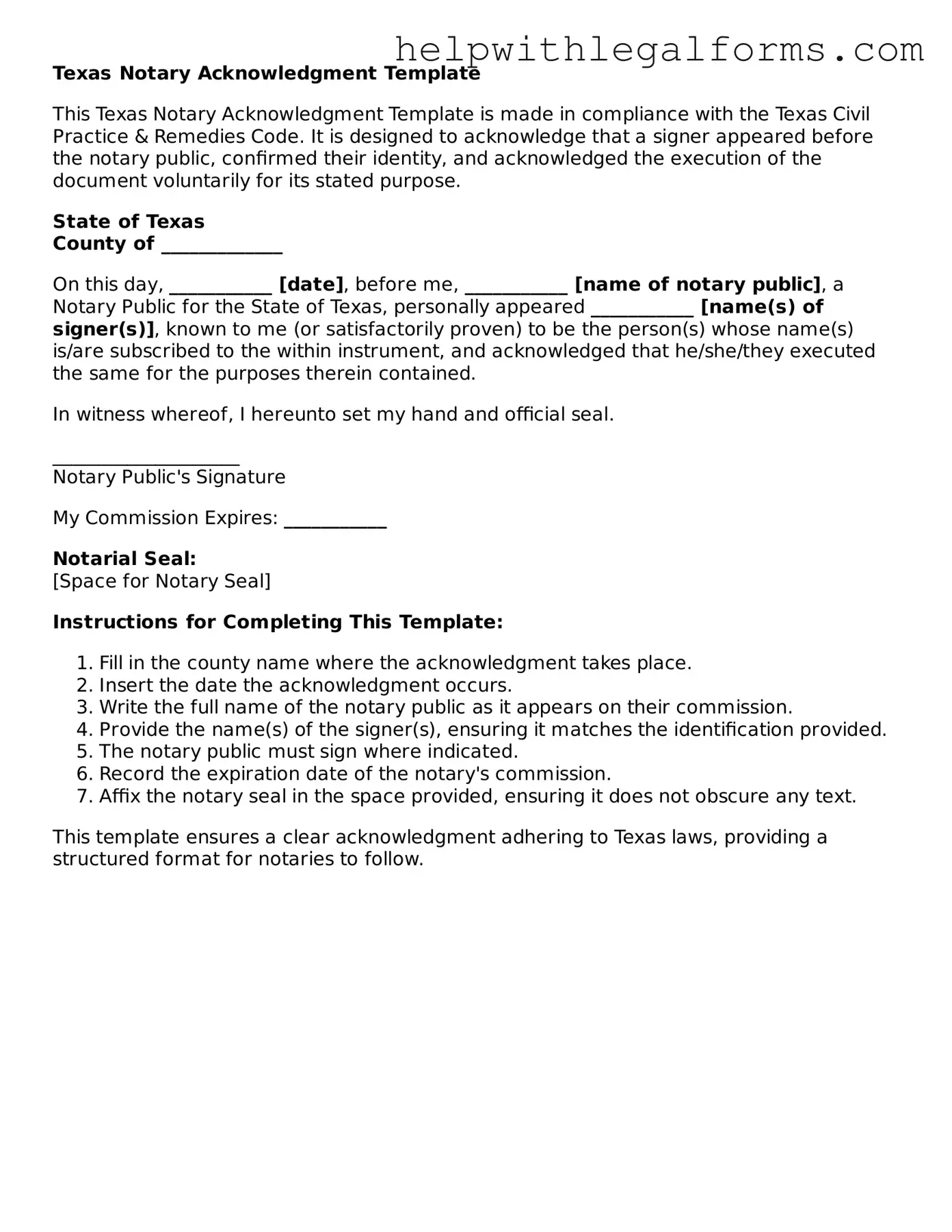Texas Notary Acknowledgment Template
This Texas Notary Acknowledgment Template is made in compliance with the Texas Civil Practice & Remedies Code. It is designed to acknowledge that a signer appeared before the notary public, confirmed their identity, and acknowledged the execution of the document voluntarily for its stated purpose.
State of Texas
County of _____________
On this day, ___________ [date], before me, ___________ [name of notary public], a Notary Public for the State of Texas, personally appeared ___________ [name(s) of signer(s)], known to me (or satisfactorily proven) to be the person(s) whose name(s) is/are subscribed to the within instrument, and acknowledged that he/she/they executed the same for the purposes therein contained.
In witness whereof, I hereunto set my hand and official seal.
____________________
Notary Public's Signature
My Commission Expires: ___________
Notarial Seal:
[Space for Notary Seal]
Instructions for Completing This Template:
- Fill in the county name where the acknowledgment takes place.
- Insert the date the acknowledgment occurs.
- Write the full name of the notary public as it appears on their commission.
- Provide the name(s) of the signer(s), ensuring it matches the identification provided.
- The notary public must sign where indicated.
- Record the expiration date of the notary's commission.
- Affix the notary seal in the space provided, ensuring it does not obscure any text.
This template ensures a clear acknowledgment adhering to Texas laws, providing a structured format for notaries to follow.
